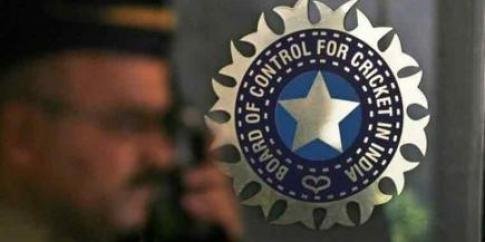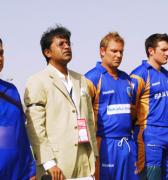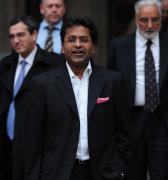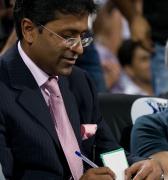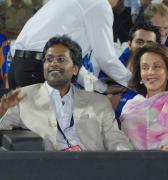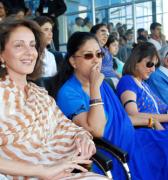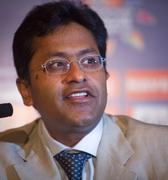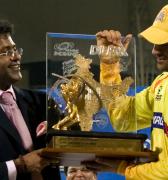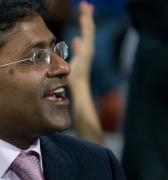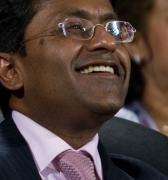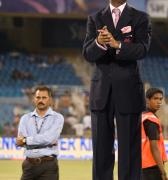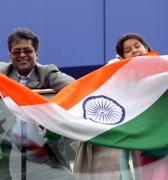ICC's good-faith attempt lacks logic: BCCI old guard
Saturday 11 February 2017
ICC's good-faith attempt lacks logic: BCCI old guard
In its gripe that the International Cricket Council (ICC), led by independent chairman Shashank Manohar, is denying India its rights from revenue and governance perspective, the BCCI old guard is aghast at a particular remark that was made ahead of the governing body's Board meeting in Dubai last week.
A paragraph in the ICC proposal to Member Boards sent out ahead of the Board meeting categorically states: "There is no scientific formula or technical analysis behind the % distribution allocations that are being proposed. Instead, it is a good faith attempt by the working group to try and allocate in a simple manner what it considers to be a reasonable and fair distribution of ICC's surplus".
The Indian cricket board is crying foul and their logic states: "There was a scientific formula to the 2014 model. It stated that India, England and Australia would earn maximum revenue based on the logic that they brought maximum revenue to the ICC".
The ICC proposal further states that "this model is not intended to represent an indefinite model and is rather only to be viewed as a temporary solution until the end of the 2015-23 rights cycle".
If the model is a temporary solution, India's question is still left unheard. "What is the hurry and logic in stating that Zimbabwe or Afghanistan should earn the same as India? The ICC itself is admitting that there's no scientific formula to this," says an old guard. The 2014 theoretical model's eight-year projections - from 2016-23 - states that from a projected revenue of US$2.5b, $800m would go towards contribution costs, $550m towards event expenses, $250m for central expenses and $70 towards cricket fund. From the net surplus of 830m, constitutional share of US$623m would go to the full members and $208m to associate members.
The 2014 reality model is based on the 2016 model wherein the event expenses and central expenses have been factored in as per 2016.
However, the 2017 Board meeting, which projects total revenue of US$2.7b for the same cycle has done away with the contribution costs. While US$600m has been reserved for event costs, $300m for central expenses, $40m as contingency funds and $25m have gone towards reserves, the ICC has also proposed to do away with the cricket fund.
And therefore, the net surplus the governing body's been able to show now - of US$1.735b - is higher than the 2014 model from which full members stand to gain $1.535b while associate members get $200m.
The math goes like this. Earlier, the % distribution of the ICC was made on revenue, now it is made on surplus. So, if the ICC earned Rs 100 according to the 2014 model, BCCI would earn Rs 20.3 on revenue but close to Rs 33.5 if calculated on surplus. The proposed 2017 model works out very differently, which is precisely BCCI's grouse.
In its gripe that the International Cricket Council (ICC), led by independent chairman Shashank Manohar, is denying India its rights from revenue and governance perspective, the BCCI old guard is aghast at a particular remark that was made ahead of the governing body's Board meeting in Dubai last week.A paragraph in the ICC proposal to Member Boards sent out ahead of the Board meeting categorically states: "There is no scientific formula or technical analysis behind the % distribution allocations that are being proposed. Instead, it is a good faith attempt by the working group to try and allocate in a simple manner what it considers to be a reasonable and fair distribution of ICC's surplus".
The Indian cricket board is crying foul and their logic states: "There was a scientific formula to the 2014 model. It stated that India, England and Australia would earn maximum revenue based on the logic that they brought maximum revenue to the ICC".
The ICC proposal further states that "this model is not intended to represent an indefinite model and is rather only to be viewed as a temporary solution until the end of the 2015-23 rights cycle".
If the model is a temporary solution, India's question is still left unheard. "What is the hurry and logic in stating that Zimbabwe or Afghanistan should earn the same as India? The ICC itself is admitting that there's no scientific formula to this," says an old guard. The 2014 theoretical model's eight-year projections - from 2016-23 - states that from a projected revenue of US$2.5b, $800m would go towards contribution costs, $550m towards event expenses, $250m for central expenses and $70 towards cricket fund. From the net surplus of 830m, constitutional share of US$623m would go to the full members and $208m to associate members.
The 2014 reality model is based on the 2016 model wherein the event expenses and central expenses have been factored in as per 2016.
However, the 2017 Board meeting, which projects total revenue of US$2.7b for the same cycle has done away with the contribution costs. While US$600m has been reserved for event costs, $300m for central expenses, $40m as contingency funds and $25m have gone towards reserves, the ICC has also proposed to do away with the cricket fund.
And therefore, the net surplus the governing body's been able to show now - of US$1.735b - is higher than the 2014 model from which full members stand to gain $1.535b while associate members get $200m.
The math goes like this. Earlier, the % distribution of the ICC was made on revenue, now it is made on surplus. So, if the ICC earned Rs 100 according to the 2014 model, BCCI would earn Rs 20.3 on revenue but close to Rs 33.5 if calculated on surplus. The proposed 2017 model works out very differently, which is precisely BCCI's grouse.
Courtesy: The Times of India

ICC lacks strong leadership in current times: ex-CEO Lorgat
The former ICC boss said barring Khawaja's peace slogans on shoes showed ICC lacked consistency in applying its rules
Waugh warns cricket boards for ignoring Test cricket
Australia Great Warns ICC, BCCI Over 'Irrelevant Legacy'







